THE WINCHESTER-NABU DETECTIVE AGENCY
YEAR TWO: CASE FILE NO. 09-61
AMBER LOVE 09-JULY-2018 Catch up on Year One and previous Year Two cases at the Winchester-Nabu Detective Agency. This work is supported by the generous backers who adore my cat stories at Patreon.com/amberunmasked and they also get first access to what’s happening with my books and podcast.
Where we left off:
Last time, I reported on my day away from the cat detectives. Since then, there have been a lot of hours dedicated to chipmunk surveillance.
Holes
Before we get into the Chipmunk Mafia crime syndicate and some of the activities in which we suspect them, there’s one other mystery to be addressed. It may involve the chipmunks. It may not. Share your own theories with us on Twitter @elizabethamber or Instagram @amberunmasked.
We try not to partake in too much deforestation in order to create habitable spaces. When Gnomez Addams joined the Winchester-Nabu Detective Agency team last Yule, he underwent training indoors until spring. He studied and observed the activities from a safe place in the sewing room which doubles as one of Oliver’s napping areas. Gnomez and Oliver worked well together.
As the weather warmed up, Gnomez was moved to the second floor observation deck. There, he helped tend to the potted plants and kept watch over the property whenever Oliver was inside. The weather eventually seemed more stable with predictable spring rains and only occasional huge storms with gusting winds. Near the end of May, Gnomez was given the chance to check out different locations in the grove before he finally settled on a spot at the largest tree. The neighborhood developed a little bit more with some branch pruning, weed pulling, and a slate path installed. The neighborhood was renamed from simply The Grove to Gnome Grove and it’s only a short distance from the Fairies’ House.
Mysterious Holes
Not long after Gnomez moved into his new digs, Gus and I noticed holes in the ground. It didn’t take long before Gnome Grove looked like a living whack-a-mole game. We didn’t spot any moles though; to be fair, they do use the tunnel network mostly and don’t come out in the open unless they need to. We saw plenty of squirrels and chipmunks in the vicinity. The holes got bigger and bigger each time and more would crop up every time we visited! It doesn’t look like a sinkhole problem either.
One afternoon, I finally remembered to go through my “Gus Bag” and see if there was enough room for yet one more item. I stuffed my smallest measuring tape into the bottom of the bag so that the next time we got near the holes, I could collect some data.
It was a cool, late June morning, only 66°F with a bright sunrise. Gus and I checked the driveway multiple times before he was ready to venture over the dewy grass.
Theory #1: Wolpertingers
I miss our hiking adventures, but it sure seems like there’s a lot going on in our own backyard. Perhaps the peanut reparations are bringing more magings into our perimeter. Hopefully they feel as safe here as they do on the mountain. We’ve seen either one wolpertinger twice or two different ones; we haven’t figured out how to identify them although their antler growth seems to be a key feature that may be the way to differentiate them.
The wolpertinger(s) have always been spotted further west near Walden Park or on the main trail of Bunny Hollow. We can only assume they have similar behaviors to the eastern cottontails, but there are bound to be differences since wolpertingers are magings and not common mammals.
The holes range in size from a couple inches across in diameter to large enough to fit Gus’ head. It may be hard to see that in the photographs taken so far. Eastern cottontails are not known for digging their own burrows. They normally stick to digging out nest holes and covering them with loose grasses or hay. We were fortunate to find a nest last year, but there hasn’t been one since. If they require cover, they find protection above ground in the foliage or use groundhog tunnels. A lot of animals, especially rodentia, regularly use groundhog tunnels.
Baby bunnies are called kits!
If we were to look at the cottontail versus wolpertinger comparison again, noting the antlers of the wolpertinger, it would seem impossible for them to use such small holes for shelter or traveling. If a cottontail can’t fit, a wolpertinger can’t either.
Theory #2: Chipmunks
Chipmunk Mafia members have probably dug an intricate network of tunnels. Sure we know that they scurry above ground, but they disappear like they have magical abilities. Poof! They’re gone!
Gus tried to get more information on the Chipmunk Mafia from his primary squealer, Joey Bag O’Peanuts who lives in the Fairy Garden. Joey wasn’t willing to rat out anyone specific about who is responsible for the mysterious holes or where they lead.
Theory #3: Squirrels
It seems unlikely that squirrels would bother to make burrows. They use the trees just fine and hop above ground easily when branches don’t reach far enough.
“An adult typically has at least two different tree dens within its home range.”
Mueller, Jennifer. “Nesting Habits of Gray Squirrels.” Animals – Mom.me, Whalerock Digital Media, 21 Nov. 2017, animals.mom.me/nesting-habits-gray-squirrels-3948.html.
Squirrels are tree-dwellers. Gus and Oliver didn’t see why squirrels would need a tunnel network either, but we researched online. It was up Gnomez Addams to see what he could learn from the squirrels living in his tree. Gus talked to Gnomez and got the deets.
According to Gnomez, the squirrel he talks to the most is Squirrel Haggard, an older fella who knows the property well. Squirrels dig in the dirt to a certain extent. They hide their cache of food under the top soil like a lot of animals do.
As it turns out, there are squirrels who burrow tunnels. This is something that bothers people who try to create immaculate lawns. Maybe they’re cultivating spice necessary for their survival. Who the heck knows? But how flat does your lawn really need to be?
Theory #4: Snakes or Gorgons
Based on the size of these holes, the largest being six inches across, it seems unlikely that the average local snake would be responsible for the holes. However, if you’ve been reading about our explorations and adventures since the beginning, you may recall there was a particular incident. Last November, I posted the facts about the “Black Snake Moan” case.
It doesn’t seem that mythology nor historical research gives any clues about the birth and growth cycles of Gorgons. Artist renderings have given us a variety of possibilities. Some with snake bodies, human torsos and heads, and snakes for hair. Others have a completely human – usually female – form except for the hair of snakes. I guess it’s like when a mermaid wants to walk on land and needs legs from time to time.
I presented a hypothesis to Oliver Winchester that newly hatched Gorgons would be small like baby snakes and then grow up to be their more recognizable humanish size or even larger. Since the Gorgon I believe I accidentally created in New Jersey is the first here, no one can be sure if it’s the same as the Greek counterparts. As with other animals from birds to mammals, there are European and Asian varieties that are different from the western world varieties.
The Milos viper (Macrovipera schweizeri) comes from the family Viperidae the same venomous category as the eastern United States’ timber rattlesnake (Crotalus horridus). The difference that’s noted here for comparison is that our timber rattlesnakes are in the genus of “pit vipers” or Crotalus. These rattlers can grow up to sixty inches long but average around forty-five. The Milos viper maxes out at under forty inches. The Milos viper is unfortunately listed as strictly protected due to its population decline; similarly, timber rattlesnakes are listed as endangered in New Jersey among other states. Declines in snake populations mean there are less predators for rodents. Anyway, getting back to the original point: similar creatures can be of significantly different sizes across the oceans and continents.
 By Carole Raddato from FRANKFURT, Germany – Mosaic floor from the Villa of Dionysos depicting Medusa’s head in a circular frame, Archaeological Museum, DionUploaded by Marcus Cyron, CC BY-SA 2.0, https://commons.wikimedia.org/w/index.php?curid=30169538%5B/caption%5D
By Carole Raddato from FRANKFURT, Germany – Mosaic floor from the Villa of Dionysos depicting Medusa’s head in a circular frame, Archaeological Museum, DionUploaded by Marcus Cyron, CC BY-SA 2.0, https://commons.wikimedia.org/w/index.php?curid=30169538%5B/caption%5D
That being said, the Gorgon species may bear closer resemblance to a copperhead (Agkistrodon contortrix) or timber rattlesnake than to the snakes of Greece and surrounding islands. We’ll continue to keep our eyes out for more shed skin or broken eggs for analysis. However, copperheads give birth to live young so there may not be any evidence to analyze. Something is super cool is that copperheads can when necessary reproduce through parthenogenesis (asexual reproduction). If the new Gorgons do resemble copperheads, perhaps they are also a species of only one gender! This may be why historical representations of Gorgons in Europe were always shown as women (besides the obvious vilification of women throughout time).
This would be one heck of a discovery for the Winchester-Nabu Detective Agency. Now we just need to find more evidence than suspicious holes in Gnome Grove!
Sources:
https://sites.google.com/site/venomousdangerous/snakes/europe-s-most-venomous-snakes
https://www.britannica.com/animal/asp
https://en.wikipedia.org/wiki/Macrovipera_schweizeri
https://en.wikipedia.org/wiki/Agkistrodon_contortrix

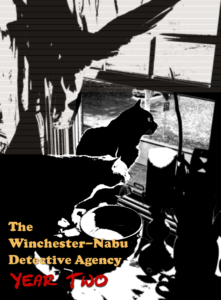
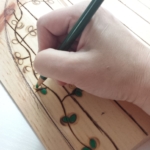
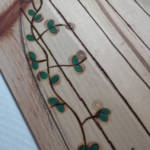

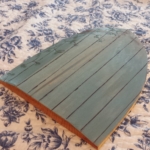
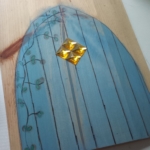
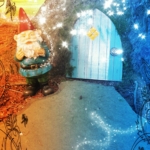
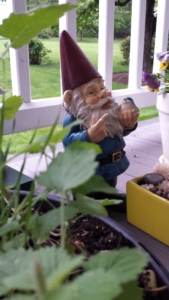
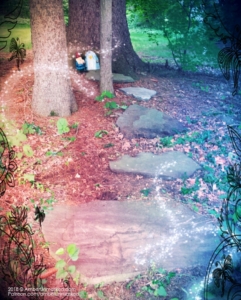

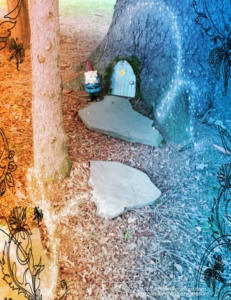
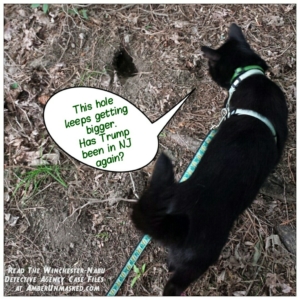
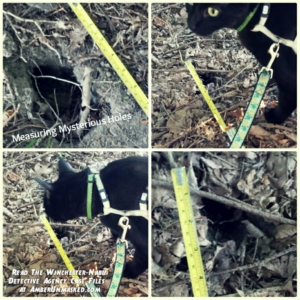
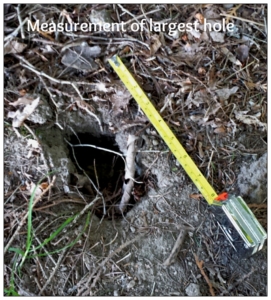
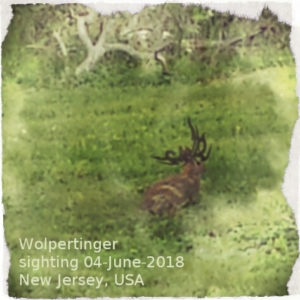
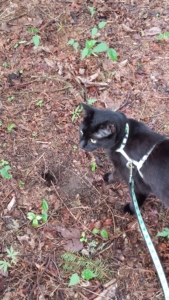
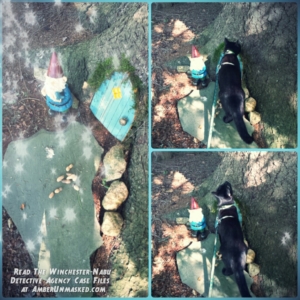

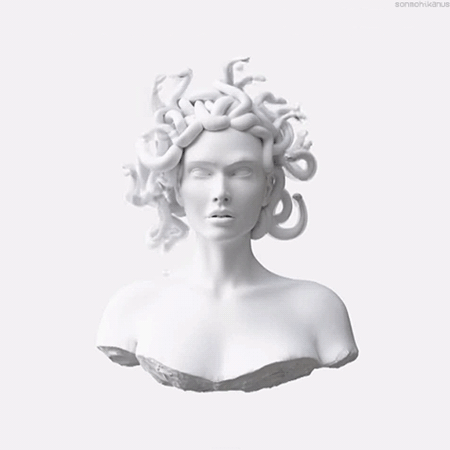
1 Comment on Winchester-Nabu Detective Agency Year Two: Case File No. 09-61
Comments are closed.